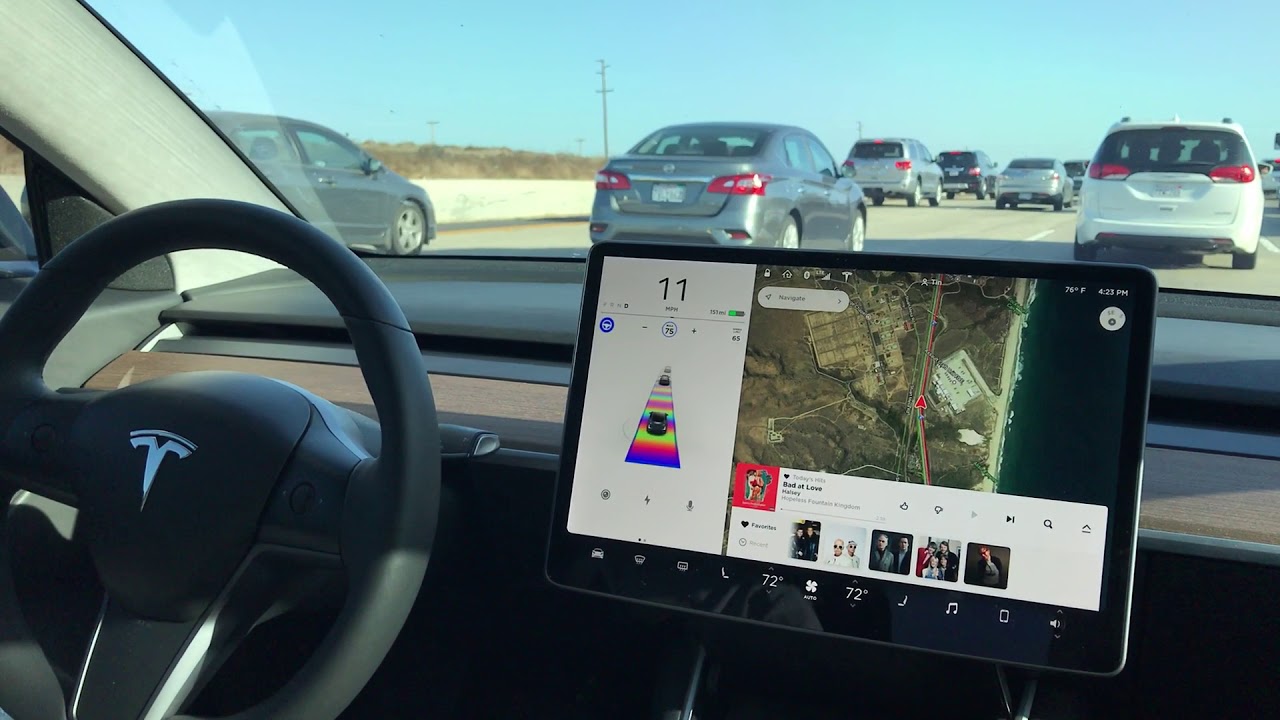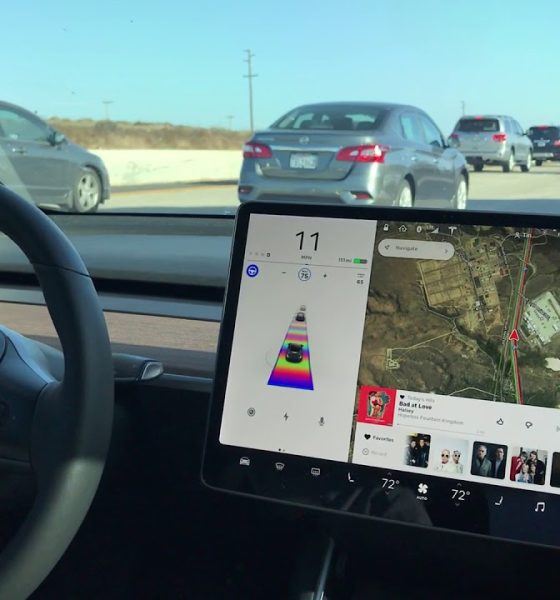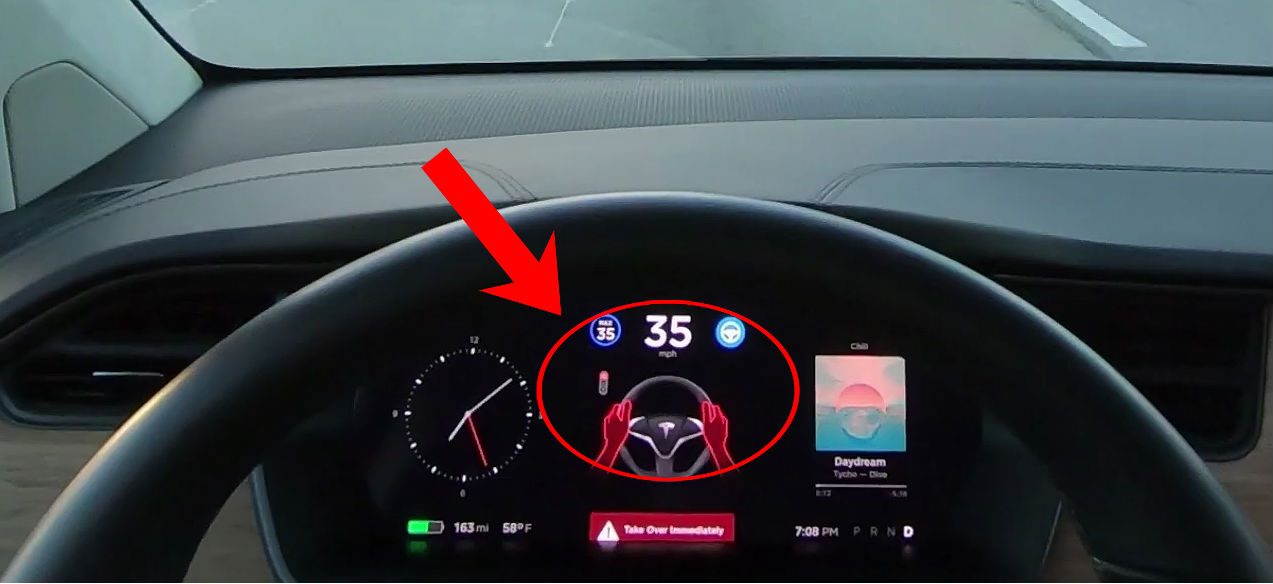

News
Driver-assistance tech seen as annoyance by many non-Tesla drivers
Automakers have been adding driver assistance features to new vehicles for years now, especially with the industry gearing towards self-driving technology. However, a recent J.D. Power 2019 U.S. Tech Experience Index (TXI) Study has found that many drivers see them as “nannying” annoyances and often opt to turn them off. While it doesn’t look like Tesla’s all-electric vehicles were included in the study, the results draw an interesting contrast between Autopilot and other manufacturers’ approach to similar technology.
“Automakers are spending lots of money on advanced technology development, but the constant alerts can confuse and frustrate drivers,” explained Kristin Kolodge, Executive Director of Driver Interaction & Human Machine Interface Research at J.D. Power, as quoted in the study’s summary. “The technology can’t come across as a nagging parent; no one wants to be constantly told they aren’t driving correctly.”
When it comes to lane-keeping and centering systems in particular, an average of 23% of customers with these systems complained that the alerts are annoying or bothersome. Of this group, around 61% frequently choose to disable the features. Even more telling is that out of six categories of vehicle features rated by the study, driving assistance was scored second lowest in measured owner experiences. The other categories were collision protection, smartphone mirroring, comfort and convenience, entertainment and connectivity, and navigation. The study overall was focused on owner experiences, usage, and interaction with 38 driver-centric vehicle technologies at 90 days of ownership.

The Kia Stinger scored the highest in all categories out of the vehicles rated by J.D. Power. On a 1,000-point scale, it averaged 834, the overall average being 781 and the lowest-scoring model coming in at 709. The Korean auto maker’s compact luxury sedan has a full suite of active safety features including adaptive cruise control, automatic emergency braking, blind spot warning, rear cross-traffic alert, lane keeping assist, pedestrian detection, and a driver attention alert.
Since owner satisfaction is directly tied to future purchases and customer recommendations, the findings in the J.D. Power study are significant. “When overall satisfaction is greater than 900, 75% “definitely will” repurchase the same make again and 95% “definitely will” recommend it. Automakers looking to drive loyalty need to provide a highly satisfying tech usage experience,” the summary concluded. With this in mind alongside self-driving developments, it’s especially important for owners to find value in their driver assistance features if manufacturers hope to win consumer confidence as features progress.
“Consumers are still very concerned about cars being able to drive themselves, and they want more information about these complex systems, as well as more channels to learn how to use them or how and why they kick in,” Kolodge commented on the findings. “If they can’t be sold on lane-keeping—a core technology of self-driving—how are they going to accept fully automated vehicles? …It’s essential that the industry recognize the importance of an owner’s first experience with these lower-level automated technologies because this will help determine the future of adoption of fully automated vehicles.”

Tesla’s Autopilot is perhaps becoming one of the most well-known driver assist features offered by an auto company today, and it’s primarily due to high owner satisfaction. Owners frequently report their positive experiences with the feature’s traffic capabilities, and numerous videos and stories have been shared about how preventative measures taken by Autopilot have prevented serious traffic incidences. What’s more, Tesla’s own safety data validates these owner findings on a macroscale and has led the company to make some functions available even without the Full Self-Driving suite.
In May, Tesla introduced two new active lane monitoring features designed to help prevent drivers from unintentionally leaving their lane of travel named ‘Lane Departure Avoidance’ and ‘Emergency Lane Departure Avoidance.’ They are derived from Autopilot, yet work while it’s not on. The Lane Departure Avoidance applies corrective steering to keep drivers in their intended travel lane if a departure is sensed without a turn signal. Emergency Lane Departure Avoidance is automatically enabled and is designed to return a Tesla vehicle back to its original lane if a departure and an imminent collision are detected, rather than simply alerting drivers of the situation. “As our quarterly safety reports have shown, drivers using Autopilot register fewer accidents per mile than those driving without it,” Tesla’s press release on the lane-oriented features stated.
Lane-keeping technologies may not be big sellers for legacy auto companies, but Tesla is clearly making very good headway with those features.

News
Tesla (TSLA) receives “Buy” rating and $551 PT from Canaccord Genuity
He also maintained a “Buy” rating for TSLA stock over the company’s improving long-term outlook, which is driven by autonomy and robotics.

Canaccord Genuity analyst George Gianarikas raised his Tesla (NASDAQ:TSLA) price target from $482 to $551. He also maintained a “Buy” rating for TSLA stock over the company’s improving long-term outlook, which is driven by autonomy and robotics.
The analyst’s updated note
Gianarikas lowered his 4Q25 delivery estimates but pointed to several positive factors in the Tesla story. He noted that EV adoption in emerging markets is gaining pace, and progress in FSD and the Robotaxi rollout in 2026 represent major upside drivers. Further progress in the Optimus program next year could also add more momentum for the electric vehicle maker.
“Overall, yes, 4Q25 delivery expectations are being revised lower. However, the reset in the US EV market is laying the groundwork for a more durable and attractive long-term demand environment.
“At the same time, EV penetration in emerging markets is accelerating, reinforcing Tesla’s potential multi‑year growth runway beyond the US. Global progress in FSD and the anticipated rollout of a larger robotaxi fleet in 2026 are increasingly important components of the Tesla equity story and could provide sentiment tailwinds,” the analyst wrote.
Tesla’s busy 2026
The upcoming year would be a busy one for Tesla, considering the company’s plans and targets. The autonomous two-seat Cybercab has been confirmed to start production sometime in Q2 2026, as per Elon Musk during the 2025 Annual Shareholder Meeting.
Apart from this, Tesla is also expected to unveil the next-generation Roadster on April 1, 2026. Tesla is also expected to start high-volume production of the Tesla Semi in Nevada next year.
Apart from vehicle launches, Tesla has expressed its intentions to significantly ramp the rollout of FSD to several regions worldwide, such as Europe. Plans are also underway to launch more Robotaxi networks in several more key areas across the United States.
News
Waymo sues Santa Monica over order to halt overnight charging sessions
In its complaint, Waymo argued that its self-driving cars’ operations do not constitute a public nuisance, and compliance with the city’s order would cause the company irreparable harm.

Waymo has filed a lawsuit against the City of Santa Monica in Los Angeles County Superior Court, seeking to block an order that requires the company to cease overnight charging at two facilities.
In its complaint, Waymo argued that its self-driving cars’ operations do not constitute a public nuisance, and compliance with the city’s order would cause the company irreparable harm.
Nuisance claims
As noted in a report from the Los Angeles Times, Waymo’s two charging sites at Euclid Street and Broadway have operated for about a year, supporting the company’s growing fleet with round-the-clock activity. Unfortunately, this has also resulted in residents in the area reportedly being unable to sleep due to incessant beeping from self-driving taxis that are moving in and out of the charging stations around the clock.
Frustrated residents have protested against the Waymos by blocking the vehicles’ paths, placing cones, and “stacking” cars to create backups. This has also resulted in multiple calls to the police.
Last month, the city issued an order to Waymo and its charging partner, Voltera, to cease overnight operations at the charging locations, stating that the self-driving vehicles’ activities at night were a public nuisance. A December 15 meeting yielded no agreement on mitigations like software rerouting. Waymo proposed changes, but the city reportedly insisted that nothing would satisfy the irate residents.
“We are disappointed that the City has chosen an adversarial path over a collaborative one. The City’s position has been to insist that no actions taken or proposed by Waymo would satisfy the complaining neighbors and therefore must be deemed insufficient,” a Waymo spokesperson stated.
Waymo pushes back
In its legal complaint, Waymo stated that its “activities at the Broadway Facilities do not constitute a public nuisance.” The company also noted that it “faces imminent and irreparable harm to its operations, employees, and customers” from the city’s order. The suit also stated that the city was fully aware that the Voltera charging sites would be operating around the clock to support Waymo’s self-driving taxis.
The company highlighted over one million trips in Santa Monica since launch, with more than 50,000 rides starting or ending there in November alone. Waymo also criticized the city for adopting a contentious strategy against businesses.
“The City of Santa Monica’s recent actions are inconsistent with its stated goal of attracting investment. At a time when the City faces a serious fiscal crisis, officials are choosing to obstruct properly permitted investment rather than fostering a ‘ready for business’ environment,” Waymo stated.
News
Tesla FSD v14.2.2 is getting rave reviews from drivers
So far, early testers have reported buttery-smooth drives with confident performance, even at night or on twisty roads.

Tesla Full Self-Driving (Supervised) v14.2.2 is receiving positive reviews from owners, with several drivers praising the build’s lack of hesitation during lane changes and its smoother decision-making, among others.
The update, which started rolling out on Monday, also adds features like dynamic arrival pin adjustment. So far, early testers have reported buttery-smooth drives with confident performance, even at night or on twisty roads.
Owners highlight major improvements
Longtime Tesla owner and FSD user @BLKMDL3 shared a detailed 10-hour impression of FSD v14.2.2, noting that the system exhibited “zero lane change hesitation” and “extremely refined” lane choices. He praised Mad Max mode’s performance, stellar parking in locations including ticket dispensers, and impressive canyon runs even in dark conditions.
Fellow FSD user Dan Burkland reported an hour of FSD v14.2.2’s nighttime driving with “zero hesitations” and “buttery smooth” confidence reminiscent of Robotaxi rides in areas such as Austin, Texas. Veteran FSD user Whole Mars Catalog also demonstrated voice navigation via Grok, while Tesla owner Devin Olsen completed a nearly two-hour drive with FSD v14.2.2 in heavy traffic and rain with strong performance.
Closer to unsupervised
FSD has been receiving rave reviews, even from Tesla’s competitors. Xpeng CEO He Xiaopeng, for one, offered fresh praise for FSD v14.2 after visiting Silicon Valley. Following extended test drives of Tesla vehicles running the latest FSD software, He stated that the system has made major strides, reinforcing his view that Tesla’s approach to autonomy is indeed the proper path towards autonomy.
According to He, Tesla’s FSD has evolved from a smooth Level 2 advanced driver assistance system into what he described as a “near-Level 4” experience in terms of capabilities. While acknowledging that areas of improvement are still present, the Xpeng CEO stated that FSD’s current iteration significantly surpasses last year’s capabilities. He also reiterated his belief that Tesla’s strategy of using the same autonomous software and hardware architecture across private vehicles and robotaxis is the right long-term approach, as it would allow users to bypass intermediate autonomy stages and move closer to Level 4 functionality.








